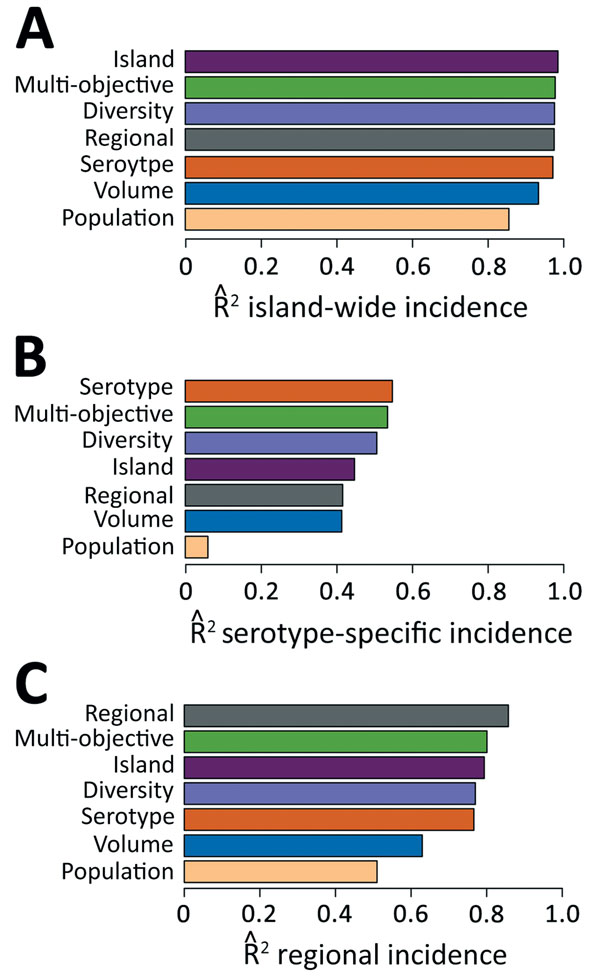Volume 23, Number 4—April 2017
Dispatch
Design Strategies for Efficient Arbovirus Surveillance
Figure 1

Figure 1. Relative surveillance system performance. The performance of the 4 optimized surveillance systems (Island, Regional, Serotype, and Multi-objective) compared with 3 alternative designs (Population, Volume, and Diversity), with respect to estimating A) island-wide cases, B) serotype-specific cases, and C) regional cases. Each system contains 22 providers. Systems are ordered from highest to lowest performance in each graph. Performance is measured by average out-of-sample across 100 different 3-year periods, resulting from linear regression of target time series (e.g., island-wide cases) on time series of cases occurring within the specified surveillance system.
Page created: April 06, 2017
Page updated: April 06, 2017
Page reviewed: April 06, 2017
The conclusions, findings, and opinions expressed by authors contributing to this journal do not necessarily reflect the official position of the U.S. Department of Health and Human Services, the Public Health Service, the Centers for Disease Control and Prevention, or the authors' affiliated institutions. Use of trade names is for identification only and does not imply endorsement by any of the groups named above.